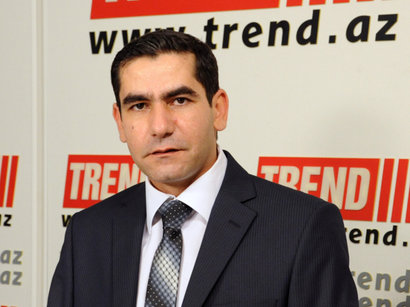PSA contracts attractively favor Iran's interests

By Dalga Khatinoglu
Head of Persian News Service of Trend Agency
Iran says the parliament has approved signing production-sharing agreement (PSA) in joint oil and gas fields as well as the off-shore fields in deep waters.
Mehdi Hosseini, director of the Iranian Oil Ministry-appointed committee tasked with revising oil contracts said PAS contracts would be attractive for foreign companies, alongside the other new designed contracts which Iran would unveil in June.
Iran has 28 joint oil and gas fields, where neighbors extract nine times more from these fields.
Iran has no experience in PSA contracts due to legal restrictions that don't allow any company to share in the national oil and gas reserves.
Rewards of PSA
According to PSA, a contractor accepts all risks of a project, puts up the money, providing the equipment for exploration and development of a field in order to obtain a percentage of the field's reserves. PSA also raises the contractor's motivation and commitment to increase the recovery rate of fields as an owner of reserves.
Iran's oil field's recovery rate, dependent on whether it is in the off-shore or on-shore sector, is very low, based on the U.S. Energy Administration report published in March 2013 which puts the figure at 20 to 30 percent.
Because the PAS life is long-term, until the inactivation of field, the contractor has opportunities and time to closely evaluate other cooperation opportunities in Iran.
Becoming a shareholder of a field's reserves has its own advantages for a contractor. For instance, the contractor can put its share in a field as the company's assets and financial endowment.
The oil extraction expenses in Iran are very low, about $5 to $10 per barrel. On the other hand, according to statistics, from 17 exploration wells drilled in Iran, 14 of them have reached oil and gas reserves. So the risks of PSA are low in Iran with 70 percent of its landscape resting on sediment layers that potentially hold hydrocarbon resources.
On the list of PSA advantages, a contractor can gain more benefits from rising oil prices as a shareholder of reserve. This is more attractive for companies than Iran's existent "pay-back" agreement which pays off the contractors' investment and benefits through years without considering the increase in global oil price.
There is also more balance between risks and rewards in PSA and a win- win situation is made between contractor and Iran.
Presently and so "forever", Iran has the authority of investment, equipment, etc. provided by a contractor in the PSA model. Iran can also take part in some development aspects of project itself.
Since about 80 percent of Iran's current active fields are in their second half-life and faced with an 8 to 13 percent natural drop in production level annually, Iran needs immediate and active development in oil projects to compensate for the decrease.
Joint fields
Iran holds above 153 billion barrels of oil reserves of which 29 percent are off-shore fields. The country's proven gas reserves are about 33.6 billion cubic meters.
In joint fields, the situation is worse than other sectors.
Iran has 15 joint oilfields with its Arab neighbors. The joint oilfields' production accounts for less than 10 per cent of Iran's current total oil output.
The country's total oil output is about 2.75 million barrels per day.
Iran also produces 283 million cubic meters of gross gas at its joint [South Pars] gas field, but according to BP's reports, Qatar produces some 460 million cubic meters of gas per day mostly from South Pars (North Dome) gas field. Qatar also extracts some 450,000 barrels of oil from the field's oil layer, while Iran still fails to tap the oil layer.
Majlis Research Center reported in January 2013 that the total extraction volume of Iran's neighbors from the joint oil and gas fields is nine times more than Tehran's share.
Dehloran, West Paydar, Naft Shahr, Azadegan, Yadavaran, and Azar are the joint oilfields between Iran and Iraq. Iran daily produces 130,000 barrels of oil at the mentioned fields, while Iraq produces some 295,000 barrels.
Iran shares Forouzan, Farzad B, and Esfandiar with Saudi Arabia. Iran daily produces 42,000 barrels of oil at the fields, and Saudi Arabia produces some 450,000 barrels.
Iran and the United Arab Emirates also share Salman, Nosrat, and Farzam oilfields, along with two other little fields named Salam and Sater. The UAE produces some 136,000 barrels of oil at the mentioned fields, while Iran produces 56,000 barrels at the same fields.
Iran also shares two gas fields with Kuwait and Oman. Iran's output at the joint Hengam oilfield currently stands at 20,000 barrels, which is approximately two times more than Oman's share.
Iran plans to attract some $150 billion in oil and gas production projects by 2019.
Here we are to serve you with news right now. It does not cost much, but worth your attention.
Choose to support open, independent, quality journalism and subscribe on a monthly basis.
By subscribing to our online newspaper, you can have full digital access to all news, analysis, and much more.
You can also follow AzerNEWS on Twitter @AzerNewsAz or Facebook @AzerNewsNewspaper
Thank you!
